|
Jackknifing a Trailer on Ice on Purpose I know snow’s not for another month, but towing a trailer on snow is something you want to teach your truck now. The Bridgestone Winter Driving School at Steamboat Springs, CO, is something everyone who pulls a trailer over mountain passes, should take. In December my son and I pulled a 34′ travel trailer with a Hummer H2 through Flagstaff and Rotan Pass in a snowstorm. Being able to look at ice and snow on the road and find the best track for traction and safety, takes some practice. And practice is what you get at the Bridgestone Winter Driving School along with SafetyOne’s Snow Operations Ice Driving and Trailering Course. Trailer ice driving school for jack-knifing could save your life.
I only made it to day two of the course, but was impressed by the trailer training in the morning of how to properly load and secure cargo on a trailer, calculating and adjusting tongue weight, hitches, brake controllers and more. The inside class was taught by Carl Maxey of Maxey Truck Equipment in Ft. Collins for the 3rd year. Maxey talked about commercial vehicles which start at 10,000 GVWR. Being commercial, used in business, makes pulling trailers with pickup trucks follow some of the same rules as over-the-road semi-trucks. Such as carrying flares or reflector triangles, fire extinguisher, chains in the winter, medical card, and log books for interstate travel or if over 150 miles radius from your business. You also need to know what grade of safety chain to use, their hooks and crossing them under the hitch. There are commercial rules for reflectors on your trailers such as reflective tape along 50% of the side and 100% of the rear. Your emergency breakaway brake system on the trailer needs to be able to stop your trailer on a 7% grade for 15 minutes when disconnected from the truck. Along with the inspection of truck and trailer that needs done each time you use them, the trailer emergency breakaway needs to be tested. Maxey cautions to unplug the trailer electrical plug from the truck when testing the breakaway brake, to prevent burning up the diodes in your brake controller. Carl Maxey, also gave a presentation on the Tekonsha Prodigy brake controller, reviewing the benefits of motion sensing brake controllers which adjust brake pressure fast and proportional, verses time actuated “full brake only” with slower brake activation. Learning to use your trailer brakes separately with the hand control, can be a tool in winter driving to keep your trailer behind you. Surge brakes, as used on most boats are not legal for commercial use.
Magnesium Chloride, that is replacing salt on icy roads, can be corrosive to your safety chains and the exterior components of your axles, springs and hitches. Another reason for inspecting your trailer often. Commercial use may not apply to all businesses such as farms. But if you are a business and have employees pulling trailers, you do need to know about the commercial aspect. Things like proper tire tread, and air pressure, tying cargo down, crossing chains and adjusting trailer brakes needs to be done properly and legally. Some trailer axles now have self-adjusting brakes, which I wish I had. Maxey said the first place to check for adjusting trailer brakes, is the switch on your truck’s brake pedal. This switch activates brake lights and trailer brakes and can be loose or improperly adjusted. Carl Maxey explained adjusting trailer brakes. A well adjusted trailer brake pulls 3 amps each. So using an amp meter can help you dial in the trailer brakes as well as skid testing the trailer. For trouble free axles bearings, Maxey recommends using a double lip oil seal instead of a single lip grease seal to keep your trailer axle bearings clean. Tire pressure for trailer capacity is rated at 65 mph now, says Maxey. So faster speed lowers your trailers weight capacity. Lowering your trailer tire pressure below the recommend PSI for a softer ride, can cause uneven tire wear and lowered cargo capacity and tires can heat up from more sidewall flexing. Trailer tires can lose 2 PSI per month just sitting still. And this reporter thinks that incorrect tire pressure is one a leading cause of trailering problems. I’ve learned that it’s important to get a professional truck tire air gauge, like the truckers use for an accurate reading. With all the test vehicles I review and I check their tire pressure, I have found many of the cheap short tire gauges to be 10 to 20 PSI off. Something else that needs inspected, is cold weather can crack or break axle leaf springs if they have an impact like a pot hole before they warm up from use. In the afternoon, Art Seely of SafetyOne and the professional drivers of the Bridgestone Winter Driving School, took us up to the snow track for controlled trailer jack-knifing and weight mis-distributing of a truck on a slick oval. All the trucks had Bridgestone’s Blizzak snow tires, that I tried earlier on the Avalanche Ice Rink at the Pepsi Center on SUV’s, compared with All-Terrain tires. The jack-knife trailer was a flat bed that SafetyOne had modified with a spring loaded device chained to a special rear bumper on a Ford F250 that kept the two units from colliding as we were taught to control a trailer as it tried to pass the truck.
I’ve been in a jack-knife situation before with my 33′ flatbed trailer and one-ton dually. I was bouncing threw small snowdrifts on the way to load hay when my front tire missed the track threw the snowdrift and did a 90 degree turn into the trailer. I didn’t think about accelerating to put the truck back in the lead as counter steering by itself did nothing as I watched my trailer neck deck push threw my mirror and door. It was cold on the way home, but I was lucky and only lost a door. The Ice Driving and Trailering Course taught me to control, with throttle and steering, a truck going sideways, being pushed by the trailer or a trailer trying to go sideways and pass the truck. |

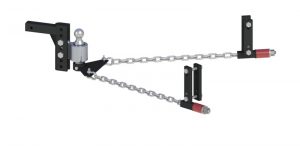

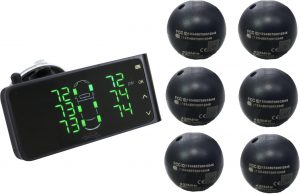
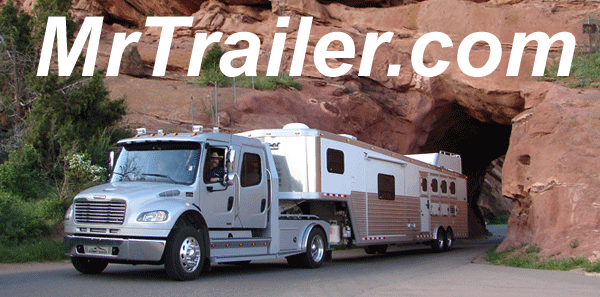

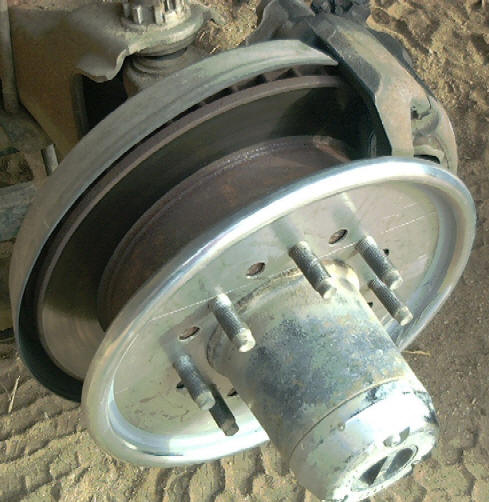
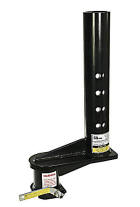






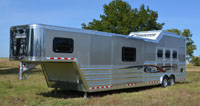
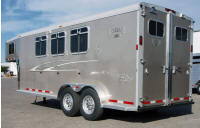
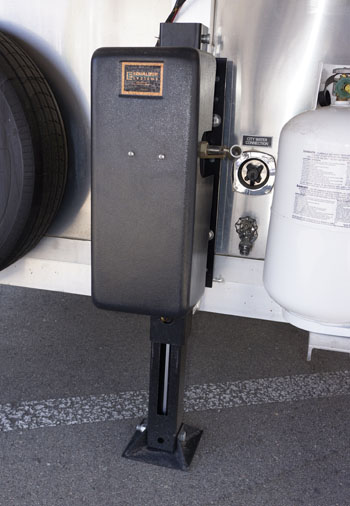
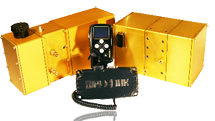
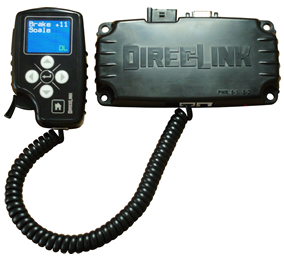


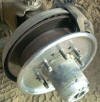 Automatic Tire Balancers for Trucks and Trailers25% to 50% longer tire life,
Automatic Tire Balancers for Trucks and Trailers25% to 50% longer tire life, 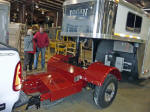 Automated Safety Hitch
Automated Safety Hitch 
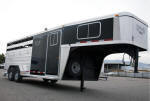



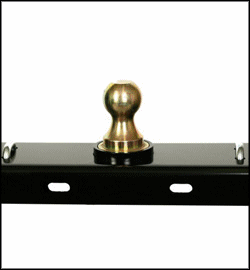
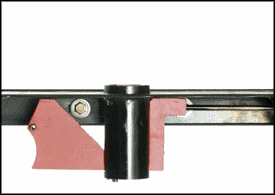
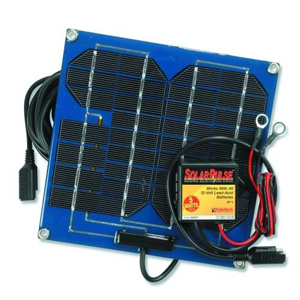



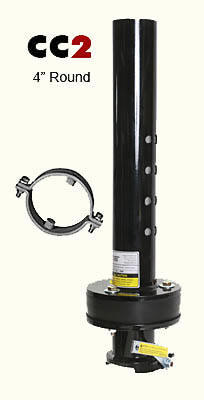 Popup Cushion Coupler Happy Horses Smooth Trailers
Popup Cushion Coupler Happy Horses Smooth Trailers
